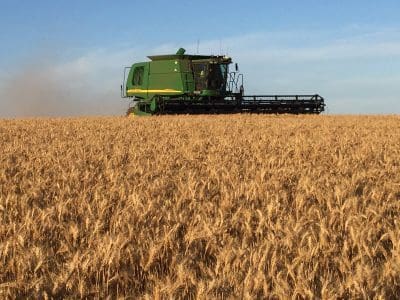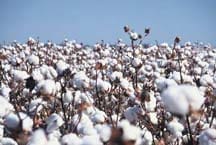AUSTRALIA’S wheat crop is set to hit a record 33.0 million metric tonnes this season, up 8.5 million, or 35 per cent, on last year, according to the United States Department of Agriculture’s (USDA) December crop report.

Australia’s estimated 13 million hectares of wheat are expected to produce a record 33 million tonnes this season.
The predicted record national harvest is up 4.7MT, or 17pc, on the department’s November forecast.
Australia’s harvested area is estimated at 13.0 million hectares, up 100,000ha from last month, and up 200,000ha on last year’s planting.
Wheat yield is estimated at a record 2.54 tonnes per hectare, up 15pc from last month and up 33pc from 2015/16.
The USDA also estimates Australian barley production will reach a record 10.6MT, up 7pc from last year.
The area harvested is estimated at 4.0 million hectares, down 3pc from 2015/16.
Yield is estimated at 2.65t/ha, up 10pc from last month, up 27pc from 2015/16 and the highest in the past 30 years.
The record production is attributed to ideal growing conditions in most regions, with the exception of localised losses resulting from flooding in southeast Australia and frosts in Western Australia.
Satellite-derived vegetation indices (the normalised difference vegetation index or NDVI) showed healthy vegetative conditions since May for all major wheat and barley producing states.
The USDA has revised upwards its forecasts for Australia’s 2016/17 cotton crop to 4.5 million bales, up 0.5 million or 13pc from last month, and up 1.9 million bales or 73pc from last year.
Harvested cotton area is forecast at 525,000ha, up 50,000ha or 11pc from last month, and up 213,000ha or 68pc from last year. Yield is forecast at 1866 kilograms per hectare.
The increase in cotton area is driven by an increase in both irrigated and dryland cotton plantings.
This will be the first time in three years that a significant area has been planted to dryland cotton.
This season’s above-average rainfall has increased water storage for irrigated cotton and provided adequate soil moisture in dryland cotton areas.
Also, higher cotton prices relative to sorghum have encouraged a shift from sorghum area to cotton.
The irrigated cotton area is forecast to increase, reflecting higher reservoir levels supplying cotton growing regions compared to last season.


HAVE YOUR SAY